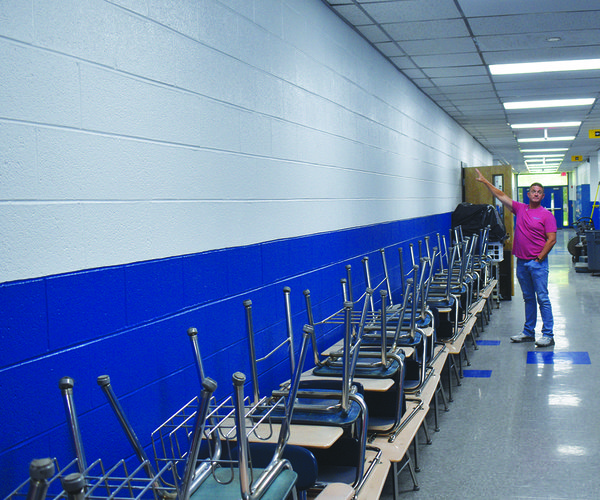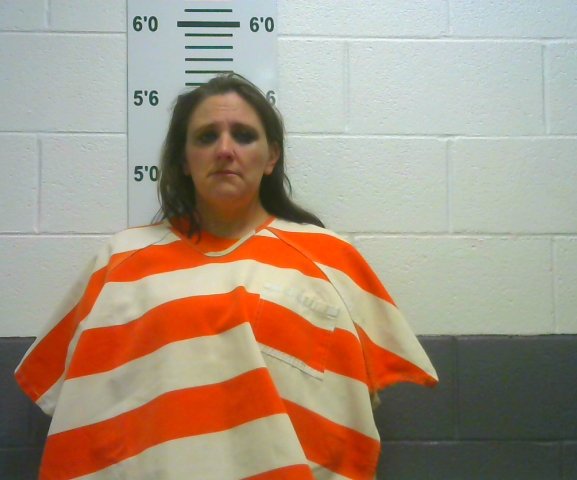The issue over the current inadequate DeKalb County Jail and how to move forward concerning expansion or whether to build a judicial center has reached a fever pitch amongst local residents, culminating in a petition drive aimed at stopping funding for a proposed facility seemingly going to a referendum. It seems the county commission has found itself in a tough spot over how to move forward while appeasing taxpayers who say other issues are more important. But the question is how did we get to this point, and are there other options the county can consider?
Overcrowding at the DeKalb County Jail is not a new issue, with the county government tackling the issue for over 25 years now. In January 1999, the county was in discussions with three other counties (White, Warren, and Van Buren) over the feasibility of a regional jail. County mayors from each county gathered in Sparta to discuss a regional jail that would be funded by all four counties, with the location at the convergence of White, Warren and Van Buren counties on Highway 70S in the vicinity of Rock Island. While there were a couple of meetings held on the concept, the idea was eventually deemed incompatible with the county’s needs.
It was then that the plan for expansion was discussed and eventually put in place. The DeKalb Jail Annex was planned and by April 2001 construction on the 38-bed, 5,365 square foot addition was finished. Southbuild of Memphis Tennessee, was the architect/design engineer, while Henson Construction of Jackson, Tennessee built the structure. On May 6, 2001, an open house was held for public tours of the facility and the jail was then put in operation immediately after. The building featured 32 dormitory-style beds, with six additional beds in three isolation cells.
The Jail Annex was phase one of a three-phase plan for jail expansion. Phase-2 would be built to the south (behind) the annex with 44 additional beds, while phase-3 would be east. During this time the Smithville Review reported that the county had purchased adjacent land to the east of the new facility, including a house that was demolished, where phase-3 would occur. Phase-3 would add an additional 76 beds to the jail, for a total of 158 beds. Property was also acquired to the south of the jail from two individuals.
Then County Executive (County Mayor) Larry Webb was quoted as saying, “With the property the county purchased we think there is enough property to take care of the jail needs for several, several, years.”
At that time, the opening of the Jail Annex solved inmate housing issues, but that didn’t last long. In November of that year the City of Smithville announced that it would be shutting down its jail facility, which at that time was housing all female prisoners. The county offered to cover the cost of running the city jail, and pay insurance, but the city decided to shut down the facility noting that they were one of the last cities in the state that still operated a jail. Immediately the county was faced with separating male and female prisoners at the county facility.
In August 2023, the Tennessee Corrections Institute reduced the certifiable bed count at the DeKalb Jail from 102 (78 males and 24 females) to no more than 52 (16 females and 36 males). In addition, the basement portion of the old jail, could no longer be used.
As a result, Sheriff Patrick Ray has been forced to send some inmates, particularly females, to other places for inmate housing, but the costs to DeKalb County for that has reached approximately $100,000 and continues to grow.
Along with issues at the DeKalb Jail, other issues have been pointed out at the DeKalb County Courthouse, where overcrowded courtrooms, problems with heating and air, and security concerns have been raised. Authorities also say that moving prisoners back and forth between the jail and the courthouse also raise safety concerns.
With issues at the jail, combined with problems at the DeKalb Courthouse, the County Jail Committee, which is comprised of the whole county commission, recommended moving forward with a planned judicial center, and preliminary designs for a 150, 190, and 225 bed facility were requested by the committee.
At a meeting in February, 2024, John Eisenlau of Treanor HL Architects and Rick Bruining of Bell Construction unveiled the county’s requested estimates for a 150, 190, and 225-bed facility. With those options, the projected cost of a judicial center would be from $57,317,500 for a 150-bed jail with no shell space for future expansion to $70,317,500 for a 225-bed facility, not including the cost of property, which according to guidelines must be inside the city limits of Smithville. Proposed locations for the facility have come under fire for either being too expensive or receiving backlash from the public who do not want a new jail close to a residential area.
At the February meeting, after receiving a bit of sticker shock at the cost of the project, county commissioners asked the architect to look at building the proposed facility existing jail location.
During an April 29, Jail Committee meeting, the commission previewed three options for a new judicial center. During previous meeting, the committee narrowed down the requirements for the center, and decided to get estimates on three proposed designs; a single-story center built at a new location; a two-story facility built at a new location; and a four-story facility built at the jail’s current location. In the end, the committee voted 11-0 to approve the cheapest option, the two-story design to be built at a new location. The estimated cost for the project would be $63,817,500, not including the purchase for the land and the cost of three times more staffing.
DeKalb County Commission met June 24, with the 2024-25 consolidated budget and a $65 million bond resolution to fund the judicial center as its priority. A proposed increase to the property tax rate from $2 per $100 of assessed value to $2.51 was approved. The 51-cent increase is the second tax rate hike in as many years, up from $1.7308 to $2 last year. The increase was needed in order to secure up $65 million in bonds needed to fund the project, a vote that angered many local residents. In the end, the commission split down the middle over the bond issue and the tax rate, voting 7-7 on each with County Mayor Matt Adcock breaking the tie with a “Yes” vote.
A grass-roots movement was then formed which garnered signatures on a petition in order to place the bond issue of a referendum in November. The referendum will not affect the property tax increase, but may stop the county from obtaining bonds for the project. With the bond issue going to referendum, the county may be placed back at square one, something some county commissioners agree with.
Commissioner Beth Pafford spoke during the June meeting saying, “My oldest (child) will be 60 by the time this is done. My granddaughter will be 31. I’m very concerned over a $65 million bond for 30 years. We don’t have a plan right now, and we don’t even have a plan for the building we’ve adopted, much less a plan for how we’re going to pay to staff it.”
The referendum may force the Jail Committee to take another look at the original plan for the DeKalb Jail. While phase-2 and phase-3 were designed as dorm-style facilities, those plans certainly could be altered to accommodate today’s jail requirements pertaining to square footage, ceiling heights, and natural light, and building in phases as originally planned would not hit the county’s budget so hard all at one time.
In addition, current design estimates indicated that a facility could not be built south of the current facility, or behind it, but according to the original plans a facility could be built there, eliminating the need for purchasing additional property.
But County Mayor Adcock said building on the existing site, according to Treanor Architects and Bell Construction would be tight, more costly, and would need up to three or four floors.
“If we built on the existing site, it would be a four-story building right on the property line and it would go straight up vertically four stories. Out beside of it would be the administration building which would be the sheriff’s office and above that could be the courts. They would come in and construct the new jail and if they could house prisoners during construction, they would leave them in here (existing jail) and then move them to the new jail once completed, tear down the other building and rebuild the sheriff’s office there. If you wanted courtrooms they could be built on top of the sheriff’s office. There would be no parking or impound lot and no room for future expansion. They would also have to build a retaining wall on one side to prevent erosion into the waterway behind it and build it in such a way to keep it out of the flood zone and relocate utilities twice,” said Adcock.
In the end, the county is still facing an overcrowded jail, problems with the courthouse, and no clear plan for the future.





